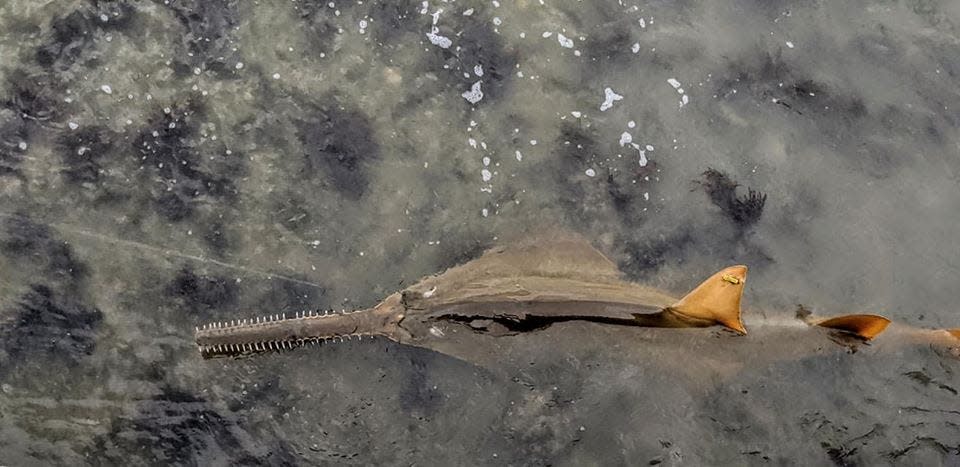Whirling mystery: Why are elevated toxin levels in Florida Keys still killing fish?
Scientists are still puzzled over what appears to be a neurotoxin that's killing dozens of species of fish in the Florida Keys.
Called "whirling," the condition involves sick fish swimming in odd, often circular patterns at the surface of the water.
More than 50 species in the Lower Florida Keys have been documented with the conditions. Particularly troubling is the number of smalltooth sawfish that are dying as scientists estimate there are only a few hundred of them left in Florida waters.

Many of those fish later die, but some fish have recovered when they've been captured and a taken to water that's not tainted, which leads scientists to believe a toxin in the water is at the root of the problem.
Mike Parsons is a professor and researcher at Florida Gulf Coast University, and he's an expert in ciguatera, which is typically talked about when discussing food borne illnesses in humans.
But elevated ciguatera levels and the presence of ciguatoxins makes Parsons and others believe that fish are dying from concentrated levels found in parts of the Florida Keys.
Harmful algae bloom thought to be root of fish kills in Florida Keys
"We don't think it's dietary because we're not seeing an uptick in people being sick, so that causes us to think it's in the water," said Parsons, who was in the Florida Keys recently to talk with business owners and anglers. "We collected water, sea grass blades and macro algae as well as fish and we were looking for harmful algal blooms and we looked for benthic dinoflagellates that lives on sea grass and the macro algae and to see if they were in the water column."
The Florida Fish and Wildlife Conservation Commission has sent 52 fish to the University of South Alabama for toxin analysis, the agency reports.
More: Toxic algae the likely culprit behind dead sawfish in the Florida Keys
FWC has received 404 fish kill phone reports from fishermen and boaters through April 3.
The mysterious outbreak was first reported in the fall of 2023, and the string of smalltooth sawfish deaths started in January, according to FWC records.
Parsons said some fish collected in tainted waters have been transplanted to other areas and made recoveries, reinforcing the idea that the problems is being caused by a toxin in the water.
"The really interesting thing is we're up to 50 different fishes being affected now and fish are exposed to the toxin by eating the prey items and the herbivores eat the fuzz off the sea grass blades, and if you collect a spinning fish while it's spinning and put it on a clean reef, many of those fish recover. so that tells us it's a toxin in the water, Parsons said.
FWC says there are no signs of a communicable pathogens or bacterial infection.
Neither high water temperatures nor dissolved oxygen levels are thought to be the root of the deadly outbreak.
"We've been studying ciguatera for 15 years and there are always ciguatoxins in the water," Parsons said. "It's not like this is new but maybe we're seeing more but it's hard with water-soluble toxins because we didn't look at them because they weren't thought to be an issue."
Connect with this reporter: Chad Gillis on Facebook.
This article originally appeared on Fort Myers News-Press: Florida wildlife: Sawfish, others die from mysterious water toxin

